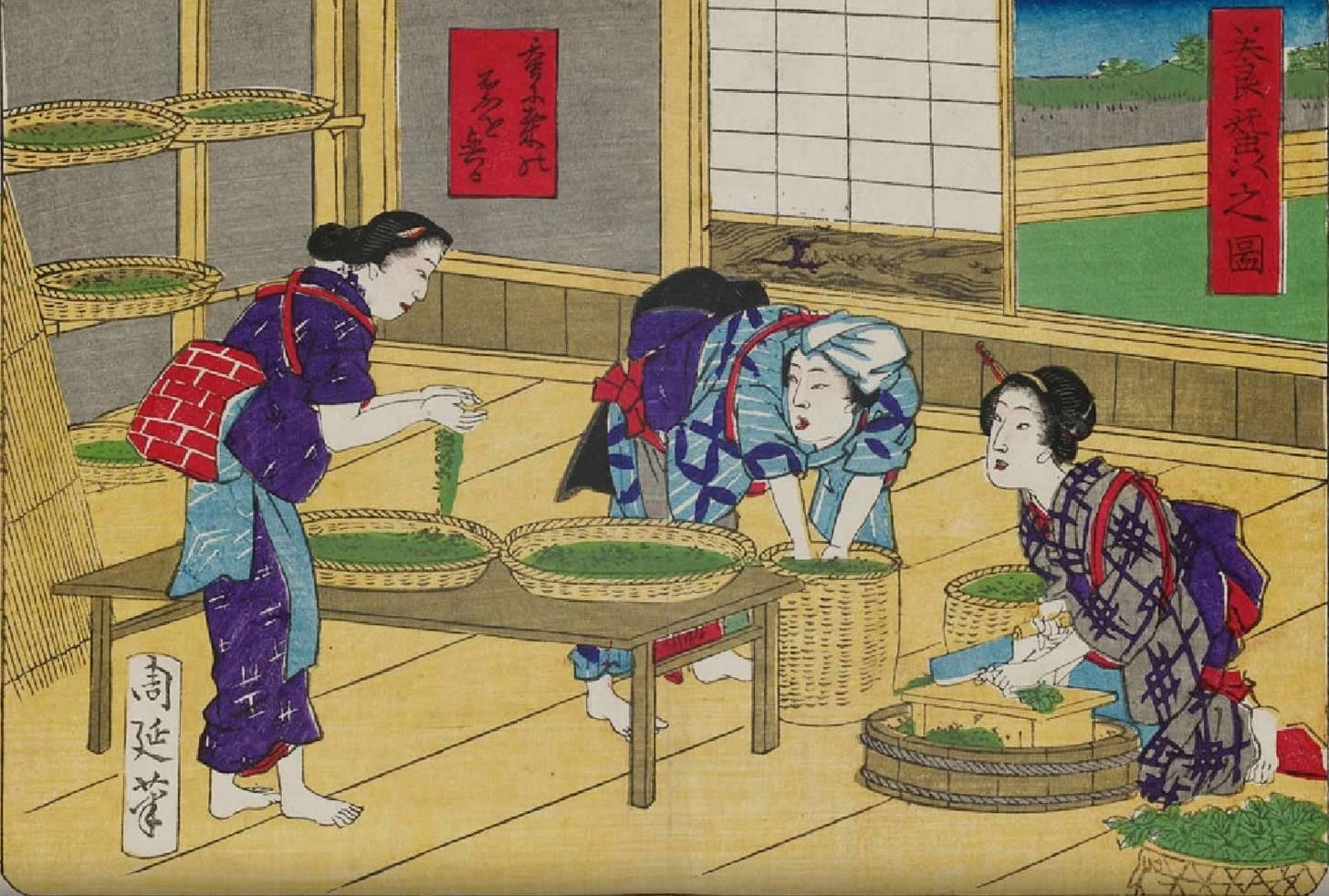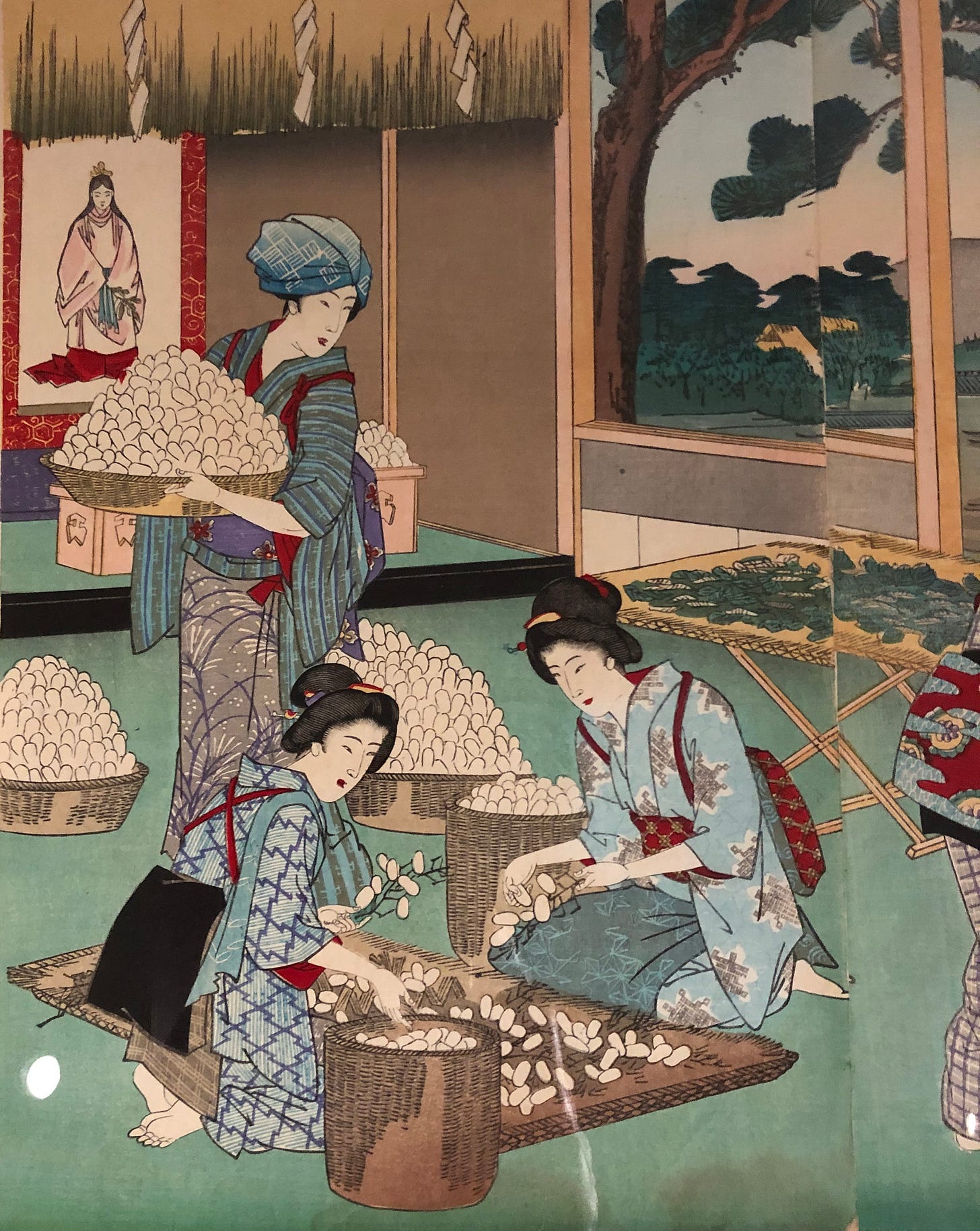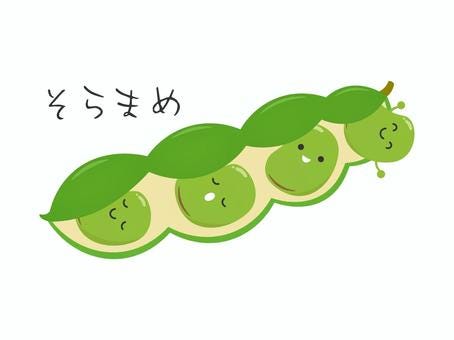Heavenly Bugs Awaken
This micro-season is all about the fabric of daily life.
I like to break up my workday with running. There is a nice path with a lot of trees in my neighborhood, and I’ve jogged it a few times a week for more than two decades now. I’m not particularly fast. In fact, my husband and I laughed when he caught up to me by fast-walking one day. But my aim isn’t to train, or even max out my heart rate. I just see running as a fun way to clear my mind. I find that I often get new ideas or inspirations when I run — several of my book concepts emerged on the trail. I also find it focuses my attention on my surroundings, making me more aware of seasonal changes.
Over the last week or so I’ve noticed the leaves growing rapidly greener and greener, thicker and thicker, especially on clear days after a long, drenching rain – a typical weather pattern for May. Yesterday, when I went for my jog, the sun was shining, and the greenery bright enough to practically dazzle. As I jogged beneath a verdant tunnel, old memories came flooding back.
I was always excited by this time of year when I was a child. Even then, wherever I looked, I could sense the energy of life. The greenery overhead. The ants emerging from their tiny holes in the ground. Delicate skipper butterflies alighting on flowers. Birds tending to their nests. This switch from spring to summer was when nature revealed herself, in all her varied forms.
Once, in elementary school, our teacher passed out little jars to the class. Each contained a smooth, pale caterpillar. She told us they were kaiko: silkworms. They had just woken up, she said, and they ravenously hungry. Our homework was to feed them until they were satiated enough to spin cocoons. Now I know why. According to the shichijuniko, the calendar of the seventy-two micro-seasons, the period between May 21st and 25th is kaiko okite kuwa wo hamu: “silkworms awaken and eat mulberries.”
Silkworms were first brought to Japan from China almost 2,000 years ago. Farming them has been a part of life here ever since. After silkworms hatch, they eat mulberry leaves day and night. Then, when the time comes, they weave a cocoon around themselves, each knit from a single strand of raw silk, 1,500 meters long. A soccer pitch is 105 meters long, by comparison. It’s pretty impressive for such a tiny creature.
Silkworms are a domesticated insect. They don’t move much, and have been so transformed by millenia of selective breeding that they can’t even look for their own food anymore. They depend on people for sustenance. This micro-season tells us, or rather those who cultivate silkworms, that it’s time to pick fresh mulberry leaves to feed those hungry little mouths. I recall asking the teacher where we would find mulberry leaves. Her answer surprised me: just go outside. They’re everywhere.
I suspect that many of these wild mulberries are descendants of those used in the silkworm industry, which grew rapidly as Japan modernized in the late 19th century. Silk was the nation’s biggest export in the early 20th. The peak of Japan’s sericulture (as the cultivation of silkworms is known) and associated silk-spinning industry was in 1930, when some 40% of all farmers in Japan tended silkworms. Back then, it was common for those in the business to convert the second floors of their homes into silkworm farms. There were so many silkworms munching leaves above their heads that it gave rise to a poetic term, also used as a kigo in haiku: ko-shigure, “silkworm rain.” And when you listen to the sound, I think you’ll agree, the gentle pattering sounds like a spring drizzle! (Here’s the sound – don’t worry, no images. Make sure to turn up the volume.)
I visited a silk museum in Yokohama while back. I learned there that making a single silk necktie requires 140 cocoons. A woman’s shirt requires 415. My hobby is wearing kimono. To make a full set of kimono garments (kimono, obi belt, nagajuban under-garment, and other necessities) requires nearly 9,000 cocoons! So wearing silk means many tiny lives helped clothe you. It’s important to remember these things.
In Japan, craftsmanship and spirituality are as intertwined as the threads in fabric. The silk industry is just one example. Take the kanji for silkworm: 蚕. Its compounds can be broken down into two components, reading “heavenly” atop “bug.” This shows the spirit in which people viewed silkworms long ago, putting them on a pedestal over other insects. The earliest chronicles of Japan, Kojiki and Nihon Shoki, describe silkworms as having been born from a kami. Amaterasu, the goddess of the sun, is depicted as pulling a silk thread from a cocoon. There are still places throughout Japan that venerate the local kaiko-kami, the god of silkworms. So it’s safe to say that people in the past saw the farming of silkworms, and making of silk, as a kind of divine calling.
And they knew how much their livelihood depended on the lives of other living things. This is why people in the industry always use honorary terms when speaking of silkworms. They refer to them not as kaiko, but as “o-kaiko-san,” or “o-kaiko-sama,” “honorable mister-or-miss silkworm.” That trend still continues in the kimono industry today. Nobody scolds anyone for calling a silkworm just a kaiko, but I think it’s kind of nice to honor them. So I started using the honorific, especially when I’m talking about them in the context of wearing a kimono.
Sericulture is in serious decline today. The invention of synthetic silk in the form of nylon, plus a general decrease in kimono wearing, are some of the reasons why. This makes the micro-season of kaiko okite kuwa wo hamu, “silkworms awaken and eat the mulberries,” difficult to imagine for many modern people.
But if you look carefully, you can see signs, trails to the past, like the wild mulberry trees growing here and there along my jogging path. Another can be found in the supermarket. Fava beans are in season at the moment. There are two ways to write the word in kanji. One is 空豆, sora-mame, “sky beans.” The other is 蚕豆, pronounced the same, but meaning “silkworm beans.” One reason being the shape is similar to kaiko, and the other that fava beans taste best during the time period when kaiko are getting ready to make their cocoons!






When the Shonai Clan forfeited against the imperial government during the Boshin war, Saigo Takamori managed to convince the government to allow all the samurai to establish a silk industry instead of being fined, turning swords into hoes as the saying goes. Near Mt. Haguro there is the Matsugaoka Reclamation Land where a lot of the silk farming and breeding took place, and that’s why Tsuruoka City is home to Japan’s northernmost silk industry, one that still does everything in the same place at that! It’s worth a visit if you have an afternoon :)
I facilitate a Silk Study Tour to Japan biennially in May. We visit several important sites learning about sericulture, silk, textiles, and so much more.
I often describe it as “seeing Japan through the eyes of a silkworm”. And yes, okaiko san.
Thank you for this wonderful refresher!
Shared.